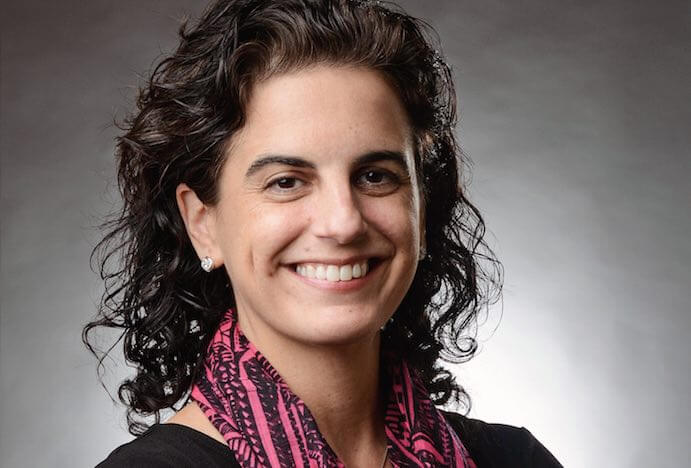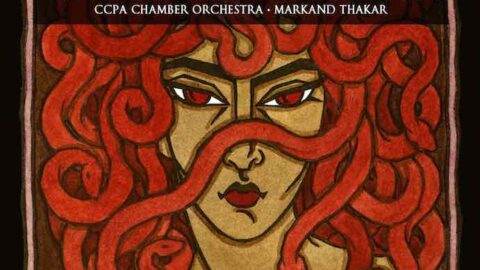The sounds and stories of Stacy Garrop’s Mythology Symphony (2007-2013), recently recorded and released by Cedille Records, are familiar yet have been both texturized and contextualized in new ways. The Mythology Symphony is here presented alongside two other orchestral works, Thunderwalker (1999) and Shadow (2001), all of which weave musical structure with “direct and dramatic narrative,” which Garrop states on her website is one of her primary compositional concerns. Taking gods, goddesses, histories both personal and legendary, and themes such as ritual and death as her subject matters, Garrop achieves drama through narrativity that is not altogether direct. Rather, the instruments and melodies, embodying the voices of mythic figures, at times take on a robustly human quality much like these gods themselves, echoing as they do in human form across time and the cultural consciousness. Although Garrop is quite direct in the accomplishment of her authorial intentions, there is still enough mystery to intrigue one’s ear.
During “Becoming Medusa,” the first movement of Mythology Symphony, Medusa is personified by a piercing solo violin. Rather than following Medusa’s story linearly across time, Garrop opens with layers of clamoring dissonance indicating Medusa’s eventual fate but quickly leaps backwards to the beginning of the story: long before Perseus is sent to cut off Medusa’s head, Medusa is initially a beautiful woman. She makes the mistake of seducing the god Poseidon in Athena’s temple, incurring Athena’s wrath and resulting in her transformation into a terrifying Gorgon with snakes for hair. The narrative is represented musically with recurrent violin solos that interact with the forces centered around Medusa’s fate—forces that are personified by the startlingly crisp CCPA Symphony Orchestra, conducted by Alonda de la Parra. Medusa’s accompaniment roils and simmers in Sibelius-esque currents, cascading and ebbing through cinematic flashbacks and towards the middle getting interrupted by a percussion and wind interlude. The folksy repetitions sashay their way across the orchestra sections and onwards towards the layered, blustering reentry of the full ensemble.
This movement, composed initially as a commission for the Detroit Symphony, was followed by four more over the next six years. The first of these is “Penelope Waits,” during which the CCPA Symphony Orchestra has been pared down to a sparse chamber ensemble, and the oboe representing Odysseus’s wife Penelope sings plaintively above them. The drastic shift from Medusa’s cacophony to the lyrical, introverted musing of Penelope exhibits Garrop’s knack for a sort of disjointed drama that easily snatches the listener into its non-teleological thrust. “The Lovely Sirens,” “The Fates of Man,” and “Pandora Undone” complete the collage of musicalized mythologies, wrenching the listener from Penelope’s quiet waiting period through the ruination of a pack of raucous sailors as they become enchanted by the Sirens’ song, the slow death of a man appealing to the three Sisters of Fate, and the mysteries enclosed within Pandora’s box. Presented as a five-movement whole, the work is nothing if not dramatically propulsive.
Like Mythology Symphony, Thunderwalker and Shadow are programmatic in intricate and unexpected ways. During the former, the images and moods of Garrop’s envisioned “pre-modern earth society,” invoking the god-like Thunderwalker, are linked with the materials through which they play out: form, timbre, and mutating pitch patterns. Thunderwalker consists of three movements: a fugue meant to mirror in structure the ritualistic cleansing ceremony of the central god-like figure; a passacaglia constantly repeating and interrupting itself, as Garrop says “like one lost in chanting invocations;” and finally, a scherzo-trio. The transformation of the opening fugue motive, materializing in the final movement in the pattern of the octatonic scale, provides the momentum for the twelve-minute piece.

Finally, Shadow tells the story of a comparatively recent myth: that of the Trask family, the original residents of the Yaddo artist colony in upstate New York, where Garrop lived in 2001. Its sounds and stories are more pensive than the pieces preceding, with wandering melodies dominating the soundscape. At least at first—but this pastoral peacefulness is interrupted by a breakthrough halfway through the piece, at which time the blustering instrumental lines adopt the aggressive overlapping snarls the listener to which the listener has become attuned. Another collage of narrative and lovely interwoven textures, Shadow is an apt summation of Garrop’s sound world as conveyed by the precise musicians of CCPA, hovering as it does between life and death, between light and dark, and between creation and myth.
























